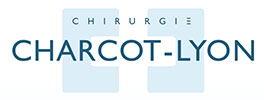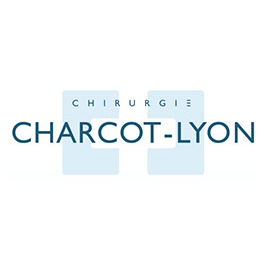What is the gallbladder? What is a cholecystectomy?
The gallbladder is a sac-like organ connected to the bile ducts.
It stores bile produced by the liver.
This bile allows the absorption of certain fats and vitamins (A, D, E and K).
The presence of stones in the gallbladder is an extremely common phenomenon but can be responsible for:
- pain (hepatic colic),
- or an infection (cholecystitis).
A calculation can pass through the bile duct and be the cause:
- inflammation of the pancreas (pancreatitis),
- or jaundice or jaundice (cholangitis).
When gallbladder stones are the cause of symptoms, your doctor will suggest the removal of the gallbladder (cholecystectomy) at the same time removing the stones it contains. This helps prevent a new crisis.
This intervention takes place by laparoscopic route and on an outpatient basis (admission in the morning and discharge the evening of the intervention).
There is no alternative for destroying these stones (ultrasound stone destruction is only performed for the kidneys).
Role of surgery (cholecystectomy) in the treatment of gallbladder stones
The surgery called cholecystectomy consists of identifying the artery that supplies the gallbladder and the duct (cystic) connecting the gallbladder to the common bile duct, then removing the gallbladder that contains the stones causing symptoms such as pain, fever or jaundice.
We have 2 techniques:
- Either by a classic and old technique by an incision opposite the gallbladder creating a scar of approximately 5 to 10 cm.
- Either a more recent and more modern technique by laparoscopy (4 incisions of one centimeter each) which has the advantage of being very non-aggressive, it reduces post-operative pain and allows a rapid resumption of daily activities.
Given these elements, we most often carry out the surgical treatment of symptomatic gallbladder stones or cholecystectomy by laparoscopic route and on an outpatient basis (admission in the morning and discharge the evening of the intervention).
What is your journey during a cholecystectomy?
After meeting your surgeon, who has confirmed that your gallbladder and the stones it contains must be removed, you will meet your anesthetist who will ensure that anesthesia is possible.
The day before the operation, you must be fasting from midnight. If you take medication on a daily basis, you should discuss this with your surgeon and your anesthesiologist, who may want you to take some of your medication on the morning of the procedure with a background of water. If you take aspirin or medication to thin your blood, talk to your surgeon and your anesthesiologist.
The Charcot clinic team (Lyon) welcomes you during admission, most often the morning of the operation, checks the administrative formalities, ensures that there is no new information and that the instructions given before the intervention (shower, fasting, etc.) were respected.
Then you are taken to the operating room in the operating room, where your surgeon and your anesthesiologist surrounded by their team welcome you and carry out the usual checks (identity, compliance with instructions, etc.).
When you are asleep, your surgeon, with the help of a camera and instruments passing through trocars, will check the artery and the cystic duct of the gallbladder using clips and then remove it (with its calculations), through one of the trocar orifices. The duration of the procedure varies from 20 to 90 minutes and depends on the difficulty that your surgeon may encounter depending on the condition of your gallbladder and the inflammation of the abdominal cavity. A drain can sometimes be left in place, you will then be hospitalized for a few days.
Once awake, after a few hours in the recovery room, you return to your room. A nurse on the ward makes sure that you are not in too much pain, that you are not nauseous or vomiting, that you gradually come to your senses. A snack is served. Your surgeon comes by at the end of the day to make sure that you are well, authorize your discharge if necessary and give you post-operative instructions.
How are the days after a cholecystectomy?
Usually, this intervention is not very painful and the pain responds well to simple analgesics (paracetamol) which will be prescribed to you when you leave the hospital.
You can eat and drink from the evening of the operation. There is no special diet to follow after gallbladder removal.
A transitory diarrhea can appear after the intervention and fades in a few days in general. If it persists, do not hesitate to talk about it.
Pain under the ribs or towards the shoulders may appear the day after the operation. They are due to the gas necessary for laparoscopy. These pains always disappear in 24-48 hours.
You can gradually resume your daily activities and light activity.
A work stoppage of 2 to 4 weeks will be prescribed for you (taking into account the particularities of your work)
One month after the operation, you go to your post-operative consultation. Your surgeon will then authorize you to resume your physical and sporting activities.
What complications can occur after cholecystectomy?
Removal of the gallbladder is a common surgical procedure.
The operating technique is precise, but as with any operation, certain complications may occur:
- a reaction to anesthesia
- bleeding,
- a wound of an abdominal organ,
- an extrahepatic bile duct wound, especially when surgical dissection is difficult.
Local changes discovered during the operation or the appearance of an unexpected complication may lead your surgeon to modify the operation initially planned in order to do everything possible to remedy the difficulties encountered. The laparoscopic approach can therefore be converted into laparotomy (conventional surgery by a scar generally under the ribs on the right or straddling the umbilicus).
Similarly, hospitalization for a few days may be decided during the operation depending on the pre-operative or intra-operative findings, this will then be explained to you.
The list of complications described is not exhaustive, but it is important to understand that one of the objectives of the preoperative consultation is to allow your surgeon to weigh up the risks that you would take by not having surgery with the risks inherent in an intervention. If an operative indication has been retained, unlike cosmetic surgery, it is very likely that there would be more risks in postponing an intervention.
If in doubt on your part, do not hesitate to ask your surgeon for clarification.
Post-operative advice after cholecystectomy?
To ensure a speedy recovery, we draw your attention to a few important points.
Resume a light activity, walking is authorized as soon as you leave, avoid driving for 5 days.
It is normal for the surgical area to be painful at first and will remain sensitive for some time. This should not prevent you from moving, walking and carrying out the acts of daily life. Pain in the shoulders, under the ribs, is also possible. They are related to the gas necessary for the laparoscopy and must disappear in 2 to 3 days.
- Precautions
- It is advisable to take showers (the bath is to be avoided for a month).
- Do not carry heavy loads (for at least one month).
- In case of exposure to the sun, provide protection against UV (total sunscreen cream) the best solution is to wear clean clothing to cover the scar.
- Avoid practicing sport until the next consultation.
- On prescription from the anesthetist: wearing compression stockings and anticoagulant.
- Bandages
- You have to leave the scars exposed. There is no need to bring in a nurse.
- The threads on your scar are absorbable, they can get wet and will disappear on their own. After your shower, pat the scars dry with a clean towel.
- Diet
Food can be resumed without restriction but in moderation.
What to do in case of problems at home after a cholecystectomy?
You absolutely must contact your surgeon in case of
- persistent fever,
- jaundice,
- abdominal pain that resists the medication prescribed after the procedure,
- nausea, vomiting
- or if oozing occurs through an incision.
When you leave, the documents provided by your surgeon and/or the nurses in the service include the telephone number of the surgery secretariat and the telephone number of the general practitioner on duty practicing at the Charcot clinic (Lyon). He can, if necessary, hospitalize you. Do not hesitate to contact us.
Smoking increases the risk of surgical complications. Quitting smoking 6-8 weeks before the procedure eliminates this additional risk. If you smoke, talk to your doctor, your surgeon and your anesthetist or call the Tobacco-Info-Service line at 39 89 to help you reduce the risks and put the odds in your favor.

